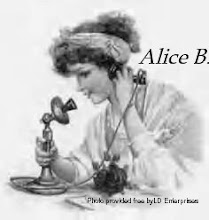| -----------------------------------------------------Highly Recommended----------------------------------------------------- Surprising New Video Reveals the 6 "Can Do" Steps to Home Business Success A small group of Early to Risers have recently decided to start their own "Perfect Home Business". Michael O'Connor, an executive at a Vancouver mineral exploration company, built a website around his passion for golf. 59 year old John Daniel Roberts from Orlando developed his "living green" home business in less than 72 hours. And former cab driver Terry Philips from Akron, Ohio started his Perfect Home Business website based on his expertise in proofreading. We've put together a brief video presentation showing exactly how they did it… and how you can easily follow in their footsteps. Go here now for the free video.
"Resistance is thought transformed into feeling. Change the thought that creates the resistance, and there is no more resistance." Robert Conklin Six Ways to Turn a "No" Into "Yes
By John Forde "By focusing obsessively on how to make an idea smooth," says marketing maven Seth Godin, "You can dramatically increase its velocity." But let me ask you... What good is a juggernaut of a marketing idea if it's headed straight for a brick wall of buyer resistance? It's common for even experienced marketers to leave the overcoming of buyer resistance almost to chance. "Push benefits, and they will buy." "Load up on premiums, and they will buy." "Turn cattle prod to stun, and they will buy..." But make no mistake. Not only is that often not enough... the truth is that even good buyers come to you with hidden doubts. Fail to address them head on and you may fail to sell. The good news is, once you identify those objections and set out to overcome them, one by one, you could be looking at your next breakthrough sales promotion. A while back, I read an article in Inside Direct Mail by copywriter Dean Rieck. Dean wrote: "Selling is simply offering the right product to the right people at the right time in the right way... you aren't forcing your customer to say yes, you're taking away his reasons to say no." For most writers-in-training, that's a revelation. Selling is not brilliant creative. It's not trickery. It's not even brute force. In fact, your customer -- if you chose him right -- wants to buy. The question at stake is whether or not he wants to buy from you... Imagine that you just called your prospect during dinner. He answers. You start reading your sales pitch over the phone. What happens next? You can imagine. Even if you've called the right prospect, he doesn't want to talk to you. He doesn't have time to talk to you. His soup, my friend, is getting cold. "No, no, no," he says. What would you have to say to get him to say "yes"? Studies show that if you can get a prospect to say "yes" to anything -- even a question about the weather -- they're more receptive to what follows. But this is a cheap tactic, don't you think? Far better is a targeted, personal reversal of the negative replies. A strategy that turns every objection into another selling opportunity. What might that entail? With every product, there's an infinite permutation of objections. Here are just a few general examples: - If your prospect says "It's not for me..."
This might just mean you have to target your message more carefully. Selling to the wrong audience wastes money. So does selling to the right audience with the wrong message. Dean Rieck -- in the article mentioned earlier -- called this "The Identification Barrier." Opportunity: Show the reader testimonials from people like him. Or paint a picture of the person the prospect wants to be and show the idealized person using your product. Also, make sure you're targeting a specific audience. Overly wide appeals fall flat. - If your prospect says, "I don't have time to read your offer..."
He's really saying that he's bored. And he doesn't see enough immediate benefit to go on reading your promotion. But the truth is, we make time for interesting things. War and Peace, for example, at well over a thousand pages, has held many a reader. Opportunity: Find the hook. Open with a benefit or jump right into telling a story. When the going gets interesting, people hang on to find out how things end. Quizzes, checklists, and fresh news keep readers involved too. - If your prospect says, "It's more than I'd like to spend..."
Remember, it's never about price. It's about value. When a prospect says your prices are too high, he's really telling you that the value of your product sounds too low. It doesn't have enough benefit to get him to pay the asking price. Opportunity: Find services like yours that cost more and build a comparison. Sweeten the deal with better premiums. Put a value on the results of your service and compare them more closely to the cost. - If your prospect says, "I don't know who you are..."
He's really telling you he needs to trust you and wants to see your credentials. Testimonials and track record are obvious solutions. But there are some others... Opportunity: Try answering questions like these: Where do you do business and why? Who are your clients, especially your famous ones? Where did you get your training, learn your trade, and hone your craft? Give some success stories. Have you won awards or seals of approval? - If your prospect says, "I've heard all this before..."
He's telling you to fix your Unique Selling Proposition (USP). How do you stand out in a crowd? You need to give him proof. Opportunity: Check out your competition. Compare offers and make yours stronger. Offer a stronger guarantee. Look for ways your product or service out-paces, out-builds, or out-races your competitor's product or service. - If your prospect says, "I'd rather take some time to think about it..."
Your prospect is not feeling the urgency of your offer. Opportunity: Small issue -- layout. Bold colors like red and dark blue and bright yellow are more urgent than brown and orange and pastels. A much bigger issue the wording of your offer and close. Is there a deadline? If not, make one. Is the product scarce? Tell them. Is there a reward for early orders? Even as a filtering device, making a list of possible prospect objections is useful. It can help you fill holes in your sales pitch. It can also help you SHRINK the pile of facts, figures, and other bits you've collected... so your message can focus on what counts. In the end, what's the real benefit? Knowing your prospect's potential objections gives you a better understanding of him... a better understanding of your product's benefits and how they relate to him... Plus, it gives you much clearer opportunities to demonstrate your product's value... a test for holes in your arguments... and renewed confidence in what you're selling... Frankly, wouldn't you have to be crazy to say "no" to all that? [Ed. Note: Copywriting is just one skill you can master to help your online business grow. Learn the ins and outs of copywriting, marketing, search engine optimization, and more from some of the best experts in the business at ETR's Info-Marketing Bootcamp. Find out how to reserve your spot here. And to get more of John Forde's wisdom and insights into copywriting (and much more), sign up for his free e-letter, Copywriter's Roundtable. If you sign up today, you'll get $78 worth of free gifts -- including John's special "Power Brainstorming Toolkit" and his e-book "15 Deadly Copy Mistakes You Can Easily Avoid"... plus a third secret bonus. For details, see John's sign-up page.] -----------------------------------------------------Highly Recommended ----------------------------------------------------- FREE... Why? What's the Catch? Let's cut to the chase: Michael Masterson has agreed to give you a copy of his Wall Street Journal and New York Times bestselling book, Ready, Fire, Aim, just for accepting a trial subscription to the Liberty Street League newsletter. Try it for 90 days (paying less than the cost of a "decent" restaurant dinner for two). If you don't like it, just let us know... and we'll give you your money back. And you get to keep the book! Get in on this incredible offer here.
"ETR is a veritable goldmine at my fingertips. Merely reading this first issue, I can see the world opening up to me. I wish I had made my subscription to ETR earlier. I can't wait to receive the next issue." Ignatius Ngoma
Zambia -----------------------------------------------------Highly Recommended----------------------------------------------------- From A to Z At ETR's Info-Marketing Bootcamp this November, we plan on covering everything... -
ALL the fundamental skills you need to become an info-marketing MASTER... -
ALL the latest marketing techniques, tips, secrets, and strategies... -
ALL the latest developments in the Internet marketing world (and how to take advantage of them)... -
ALL the latest success stories from the world's most successful online entrepreneurs (and exactly HOW they did it)... -
... and much, much more That's why ETR's Info-Marketing Bootcamp attracts some of the biggest names in the business. And you can join them...
The Language Perfectionist: The Everything Column By Don Hauptman Consider the following sentences: -
"This is a vast collection of everything ranging from African musical instruments to 20th century art, and the Egyptian Temple of Dendur thrown in for good measure." -
"You guys have had a lot of questions lately -- about everything from unfinished high-rises and legislative votes to the Citrus Bowl and even poker protocol." -
"This 10-point cheat sheet will help you navigate everything from the sessions to the parties to the weather." Bill Walsh, language blogger and a copy editor at The Washington Post, criticizes the "everything from... to..." device, observing that it creates a "false range." In his book The Elephants of Style, Walsh writes: "When you're told... that a store sells merchandise ranging from diapers to snow tires, there is no such 'range.' If the variety of merchandise is worth mentioning, there are other ways to mention it." Walsh calls this locution "a popular crutch for writers" as well as a cliche. Moreover, he notes archly, it fails to exclude anything, so the hypothetical store cited above presumably also stocks nuclear reactors and cocaine! How do you sidestep this problem? The final example above could be rephrased as follows: "This 10-point cheat sheet will tell you what you need to know about the festival, including the sessions, parties, and weather." Another solution would be to append "and more" or "and others" to the list. For the store, Walsh suggests "products as varied as...." [Ed Note: For more than three decades, Don Hauptman was an award-winning independent direct-response copywriter and creative consultant. He is author of The Versatile Freelancer, an e-book that shows writers and other creative professionals how to diversify their careers into speaking, consulting, training, and critiquing.]
We want your feedback! Let us know your thoughts on today's issue. Email us at: AskETR@ETRFeedback.com | 




I make $20 for completing a 20 minute survey!
ReplyDeleteGuess what? This is exactly what big companies are paying me for. They need to know what their average customer needs and wants. So large companies pay millions of dollars every month to the average person. In return, the average person, myself included, fills out surveys and gives them their opinion.